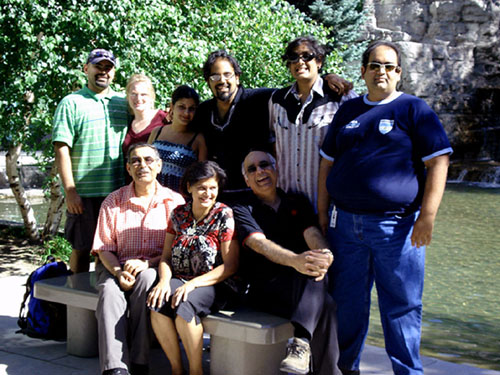In view of this whole Ian Alleyne debacle, there are two important factors to be considered, (1) the law, and (2) the method used to address an infringement of the law. Based on Section 32 of the Sexual Offences Act of 1986 of Trinidad and Tobago (excerpt shown below), there is no doubt that Ian Alleyne broke the law.
The concern is the unnecessarily confrontational manner in which the TTPS attempted to arrest him/take him in for questioning as well as the location they decided to do it.
This attempt could have been more tactfully, diplomatically, and sensibly carried out.
As a public figure who is very skillful at attracting and generating attention, it is appalling that there was no one in the decision-making process within the TTPS who was able to anticipate the fiasco that unfolded.
In the end two things happened: (1) Ian Alleyne’s career benefitted tremendously, and (2) the animosity, distrust, and resentment of the public towards the police sky-rocketed. This does not bode well for crime-fighting for T&T in the near future.
Section 32 of the Sexual Offences Act of 1986 of Trinidad and Tobago
32. (1) Before or after a person is accused of an offence under this Act, no matter likely to lead members of the public to identify a person as the complainant in relation to that accusation shall either be published in Trinidad and Tobago in a written publication available to the public or be broadcast in Trinidad and Tobago except where, on the application of the complainant, the Court directs that the effect of the restriction is to impose a substantial and unreasonable restriction on the reporting of proceedings and that it is in the public interest to remove the restriction in respect of the applicant.
(2) A person who publishes or broadcasts any matter contrary to subsection (1) is guilty of an offence and liable on summary conviction to a fine of twenty-five thousand dollars and to imprisonment for five years.
(3) Subsection (2) refers to—
(a) in the case of a publication in a newspaper or periodical, any proprietor, any editor and publisher of the newspaper or periodical;
(b) in the case of any other publication, the person who publishes it; and
(c) in the case of a broadcast a body corporate, which transmits or provides the programme in which the broadcast is made and any person having functions
in relation to the programme corresponding to those of an editor of a newspaper.
(4) In subsection (1), “complainant” includes in relation to a person accused of an offence under this Act, the person against whom the offence is alleged to have been committed.
32. (1) Before or after a person is accused of an offence under this Act, no matter likely to lead members of the public to identify a person as the complainant in relation to that accusation shall either be published in Trinidad and Tobago in a written publication available to the public or be broadcast in Trinidad and Tobago except where, on the application of the complainant, the Court directs that the effect of the restriction is to impose a substantial and unreasonable restriction on the reporting of proceedings and that it is in the public interest to remove the restriction in respect of the applicant.
(2) A person who publishes or broadcasts any matter contrary to subsection (1) is guilty of an offence and liable on summary conviction to a fine of twenty-five thousand dollars and to imprisonment for five years.
(3) Subsection (2) refers to—
(a) in the case of a publication in a newspaper or periodical, any proprietor, any editor and publisher of the newspaper or periodical;
(b) in the case of any other publication, the person who publishes it; and
(c) in the case of a broadcast a body corporate, which transmits or provides the programme in which the broadcast is made and any person having functions
in relation to the programme corresponding to those of an editor of a newspaper.
(4) In subsection (1), “complainant” includes in relation to a person accused of an offence under this Act, the person against whom the offence is alleged to have been committed.



1 comment:
As a layman, I see a reason for an enquiry or interview.
What I do not see is a reason for a sexual offence charge.
In this matter according to the act my questions are as follows:
Who are the Complainants?
Is it Ian Alleyne and the Police?
Is it Ian Alleyne and the Victim?
Who is the Victim?
Can the police press charges without the consent or knowledge of the victim?
Did the Victim press charges?
Was the face of the victim actally shown in the video(which I did not see)
If a crime was committed there must be a perpetrator (the accused) and a victim ( the accuser).
I am sure that from a legal standpoint, there must be a lot more questions as to the validity
of any sexual offence charge
Post a Comment